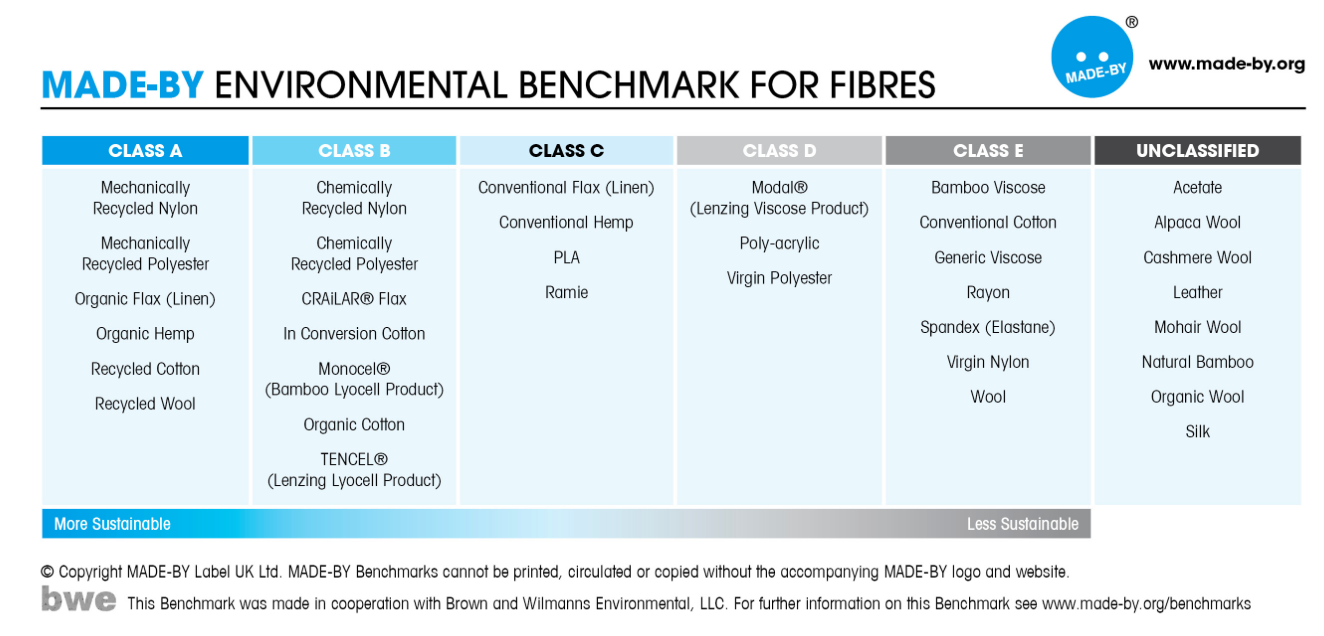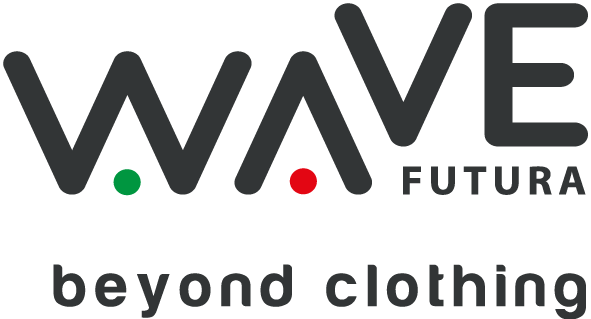QUICK DELIVERY AND TRACKED

What will you read in this article on sustainability?
- Some historical notes on the sustainability concept
- What are the goals of sustainable development
- What sustainability means in clothing
- Differences between sustainable fashion and eco-sustainable fashion
- What is ethical fashion?
- What are the most sustainable fabrics?
- From slow fashion to recycled fashion
- What is the Cost per wear?
- What is the Greenwashing?
A brief look at how and when the concept of 'sustainability' came about
The best way to introduce the theme of sustainability – valid across the environmental, economic, social and cultural spheres, – is to start by explaining what “sustainable development” actually means. This term was first introduced in the Brundtland Report by the World Commission on Environment and Development (WCED) in 1987.
Sustainable development is a development that meets the needs of the present generation without compromising the ability of future generations to meet their own needs.
A sustainable global society should be founded on "respect for nature, universal human rights, economic justice and a culture of peace".
The challenge here is to make decisions and foster innovation in a responsible, yet dynamic way, reducing negative impacts and trying to reach that subtle balance between ecological resilience, economic prosperity, political justice and cultural vitality, with the aim of guaranteeing a welcoming planet for all species, both in the present and in the future.
Concrete, measurable objectives are key, so that “sustainability” is not just seen as an abstract term like “freedom” or “justice”.
A few important dates:
1972 – The “Report on the Limits of Development” by the 'Club of Rome' think tank marked a new awareness: man's use of natural resources was reaching a limit.
1972 - Industrialised countries began to consider the effects of population growth, pollution and consumerism, while developing countries faced continuous states of poverty and deprivation, seeing further development as essential to satisfy their needs for food, drinking water and shelter. ("United Nations Conference on the Human Environment" - United Nations - Stockholm)
1973 e 1979 - The “oil crises” demonstrated just how dependent the global community had become on non-renewable energy resources.
1980 – Publication of the document entitled "World Conservation Strategy: Living Resource Conservation for Sustainable Development" (International Union for Conservation of Nature")
1982 – Publication of the "World Charter for Nature" which drew attention to the decline of the global ecosystem. The United Nations World Commission on Environment and Development (Brundtland Commission) spent two years assessing the conflict between environmental protection and development. It concluded that man's approach to development had to change and become sustainable.
1987 - The aforementioned definition of 'sustainability' became widely accepted.
21st century – Greater awareness of the damage caused by the greenhouse effect due to human activity, especially that linked to deforestation and the burning of fossil fuels.
Sustainable Development Goals
The UN's "2030 Agenda for Sustainable Development", adopted on 25 September 2015, established the current framework of 17 goals for future international development.
These goals, together with targets and indicators to measure compliance, replace the Millennium Development Goals established in 2000 following the United Nations Millennium Summit.
The 17 goals are:
No Poverty - Zero Hunger - Good Health & Well-Being - Quality Education - Gender Equality - Clean Water & Sanitation - Affordable & Clean Energy - Decent Work and Economic Growth - Industry, Innovation & Infrastructure - Reduced Inequalities - Sustainable Cities & Communities - Responsible Consumption & Production - Climate Action - Life below Water - Life on Land - Peace, Justice and Strong Institutions - Partnerships for the Sustainability Goals.
What does sustainability mean for the clothing industry?
More and more attention is now being paid to the question of sustainability in the fashion industry and consequently it is becoming more visible in the textile industry too.
The existence of sustainable fashion is particularly important given the high and widespread consumption of clothing in industrialised economies. The very idea of fashion is based on trends, meaning that products have a very short life cycle, which in turn leads to a high level of waste, which all too often is non biodegradable.
Wastage, the difficulties met in recycling large quantities of waste, and the intensive use of natural resources during the production process make the fashion industry one of the most polluting sectors in the world.
For this reason, innovation in the textile industry is now increasingly directed towards the search for sustainable fabrics.
A new consumer profile is also emerging. Consumers are now more evolved and concerned with value for money, demanding better guarantees on product quality and traceability within the production and supply chain.
Differences between sustainable fashion and eco-sustainable fashion
We tend to use the term "eco-sustainability" when the production processes and the characteristics of the products are aimed at minimising their impact on the consumption of resources and global pollution.
More specifically, the following actions are key:
- - Reduced consumption of energy and water at each stage in the production chain;
- - Processes without the use of hazardous chemicals;
- - Use of recycled materials;
- - Use of materials from organic farming;
- - “Life cycle assessment”, i.e., an evaluation of the impact of a product throughout its life cycle: processing of raw materials, transportation, production, marketing, and so on, right up to the moment the product is sent to waste.
However, sustainability does not just mean ecology.
The term sustainability also includes other non-environmental parameters, such as those concerning the conditions of work for those employed in production processes, respect for work ethics and, more generally, more attention to all stakeholders in the relevant business:(local communities, employees, customers, shareholders and investors).
What exactly is "ethical fashion"?
The fashion industry has such a huge environmental and human impact that there is now the need to introduce the concept of ethical fashion.
Consumers have the power through their own purchase decisions , to nudge manufacturers towards a change in behaviour leading to more limited consumption of energy, water, soil and non-renewable resources, as well as a reduction in the use of fertilizers, pesticides and herbicides, fewer emissions of gases into the air and fewer discharges of pollutants into the waterways, in addition to a cut in the production of toxic waste and the release of pollutants into the environment.
Consumers can reduce the production of millions of tonnes of waste by simply changing how they buy clothes garments, and also prevent the social impact of undermined labour rights (low wages, excessive working hours, forced overtime and lack of safety in the workplace), as seen in sweatshops.
Transparency is the key feature of ethical fashion. We can only monitor and check that human and environmental abuses do not occur when the production chain is truly transparent. And this transparency is only made possible through traceability, i.e., the system that allows consumers to discover where a product actually comes from, where and how it is processed, and the exact links with the country where it was manufactured.
Of course, clothing made in a sustainable and ethical way (Slow Fashion) naturally incurs higher production costs than disposable fashion products (Fast Fashion), responsible for distorting the clothing market with an unscrupulous race to cut cost prices.
So, the final goal for companies committed to sustainability is to change consumer perception going from “this product costs x”, to “this product is worth x”.
What are the most sustainable fabrics?

MADE-BY, a Dutch not-for-profit organisation, has developed its Environmental Benchmark for Fibres, which scores and places each type of textile into different classes.
Class A, with the most sustainable textiles/fibres, includes recycled cotton, mechanically recycled polyester and nylon, recycled wool and hemp.
Class B includes organic cotton, and chemically recycled polyester and nylon.
Class E on the other hand, includes conventional cotton, one of the fibres with the greatest environmental impact.
Conventionally cultivated cotton requires vast areas of land and uses large quantities of water for irrigation, as well as considerable amounts of pesticides and fertilizers, which eventually result in desertification (impoverished soil) and serious occupational health issues. Not to mention the huge carbon footprint of the transportation of fibres to the spinning, weaving, dyeing, finishing and packing plants, which are often spread around the world.
For these reasons, the fashion industry has begun to offer environmentally aware consumers items made from organic cotton, (grown in a more ecological manner, and with a different supply chain).
From slow fashion to recycled fashion
When fibres are classified on the basis of their environmental impact recycling emerges as the most powerful means of reducing our consumption of natural resources and favouring sustainability in the world of fashion.
The '3 Rs' form the basis of today's new models of Circular economy (Circular fashion): Reduce, Reuse and Recycle.
This means reorganising each industrial activity so that one particular company's waste becomes another's recycling resources.This will foster a culture of the bartering and exchange of used clothing, and the repair and upcycling of clothing so that it may be reused, thereby minimising waste and consumption levels.
What does "cost per wear" mean?
Each garment should be long lasting worn as many times as possible before it is discarded.
In terms of sustainability, the cost of a product becomes "Cost per wear" which sums up a simple concept: the cost of a product is related to how many times you use it.
Cost per wear = (purchase cost + care costs ((washing, drying, ironing)) / number of times that I wear the garment)
We are therefore urged to buy quality garments that are versatile, can be worn on multiple occasions, withstand frequent washing, and have classic well-cut shapes to ensure they never go out of fashion. Such items should be low maintenance i.e., washed at low temperatures in short washing cycles, quick drying and do not require ironing. These represent a sustainable choice and will also work out to be the “cheapest” garments according to the “cost per wear” formula.
What is "greenwashing"?
The term "greenwashing" is used to describe unsubstantiated marketing where a company claims to have good environmental credentials even when this is not the actual case..
It is a form of marketing spin, aimed at creating a positive ecological image of the company's activities and products, but does not reflect reality and is not backed up by verifiable indicators and results.
The information and data may be presented as if certified when, in fact they are not recognised by third-party accredited and authoritative bodies, which certify compliance with the relevant Standards. (Fairtrade Textile Standard, International Organization for Standardization (ISO), Global Organic Textile Standard (GOTS), Eu-Ecolabel, OEKO-TEX®, OEKO-TEX® – Made in Green, OEKO-TEX® SteP, Ecocert, Naturtextil, Global Recycle Standard, From Cradle to Cradle, ecc.).
 Italiano
Italiano